-
Executive Summary
-
Market Introduction
-
Market Definition
-
Scope of the
-
Study
-
List
-
of Assumptions
-
Markets Structure
-
Market Research Methodology
-
Research Process
-
Primary Research
-
Secondary Research
-
Market Size Estimation
-
Forecast
-
Model
-
Market Dynamics
-
of the Global Aliphatic Hydrocarbon Market
-
Introduction
-
Drivers
-
Restraints
-
Opportunities
-
Challenges
-
Trends/Technology
-
Market Factor
-
Analysis of the Global Aliphatic Hydrocarbon Market
-
Supply Chain Analysis
-
Porter’s Five Forces Analysis
-
Threat of New Entrants
-
Power of Buyers
-
of Suppliers
-
Raw Material Suppliers
-
Manufacturers/Producers
-
Distributors/Retailers/Wholesalers/E-Commerce
-
End User
-
Bargaining
-
Bargaining Power
-
Threat of Substitutes
-
Intensity of Rivalry
-
Global
-
Aliphatic Hydrocarbon Market, by Type
-
Introduction
-
Saturated Aliphatic Hydrocarbon
- Market Estimates & Forecast, 2021-2028
- Market Estimates & Forecast, by Region, 2021-2028
-
Methane
-
Market Estimates & Forecast, by Region, 2021-2028
-
Market Estimates & Forecast, 2021-2028
-
& Forecast, by Region, 2021-2028
-
& Forecast, 2021-2028
-
Region, 2021-2028
-
Ethane
-
Market Estimates
-
Propane
-
Market Estimates
-
Market Estimates & Forecast, by
-
Butane
-
Market Estimates & Forecast,
-
Market Estimates & Forecast, by Region, 2021-2028
-
Others
-
Market Estimates & Forecast, 2021-2028
-
Market Estimates & Forecast, by Region, 2021-2028
-
Unsaturated
- Market Estimates
- Ethylene
- Propylene
- Butylene
-
Aliphatic hydrocarbon
-
Market Estimates & Forecast, 2021-2028
-
& Forecast, by Region, 2021-2028
-
& Forecast, 2021-2028
-
Region, 2021-2028
-
Market Estimates & Forecast, by Region, 2021-2028
-
Market Estimates & Forecast, 2021-2028
-
& Forecast, by Region, 2021-2028
-
Others
-
Market Estimates
-
Global Aliphatic
-
Hydrocarbon Market, by Application
-
Introduction
- Market Estimates & Forecast, 2021-2028
- Market Estimates & Forecast, by Region, 2021-2028
- Market Estimates & Forecast,
- Market Estimates & Forecast, by Region, 2021-2028
-
Paints & Coating
-
Adhesives & Sealant
-
Polymer & Rubber
- Market Estimates
- Market Estimates & Forecast, by
-
& Forecast, 2021-2028
-
Region, 2021-2028
-
Surfactant
- Market
- Market Estimates & Forecast,
-
Estimates & Forecast, 2021-2028
-
by Region, 2021-2028
-
Solvent
- Market
- Market Estimates & Forecast,
-
Estimates & Forecast, 2021-2028
-
by Region, 2021-2028
-
Dyes
- Market Estimates
- Market Estimates & Forecast, by
-
& Forecast, 2021-2028
-
Region, 2021-2028
-
Others
- Market Estimates
- Market Estimates & Forecast, by
-
& Forecast, 2021-2028
-
Region, 2021-2028
-
Global Aliphatic Hydrocarbon Market,
-
by Region
-
Introduction
-
North
- Market Estimates & Forecast, 2021-2028
- Market Estimates & Forecast, by Type, 2021-2028
- Market Estimates & Forecast, by Application, 2021-2028
- US
- Canada
-
America
-
Market Estimates & Forecast, 2021-2028
-
& Forecast, by Application, 2021-2028
-
& Forecast, 2021-2028
-
Market Estimates & Forecast, by Type, 2021-2028
-
Estimates & Forecast, 2021-2028
-
Forecast, by Type, 2021-2028
-
by Application, 2021-2028
-
Forecast, 2021-2028
-
Market Estimates & Forecast, by Application,
-
Europe
- Market
- Market Estimates &
- Market Estimates & Forecast,
- Germany
-
Market Estimates & Forecast, by Type, 2021-2028
-
& Forecast, by Type, 2021-2028
-
Estimates & Forecast, by Application, 2021-2028
-
Spain
-
Estimates & Forecast, 2021-2028
-
Forecast, by Application, 2021-2028
-
Forecast, 2021-2028
-
Market Estimates & Forecast, by Application,
-
France
-
Market Estimates & Forecast, 2021-2028
-
Market Estimates
-
Market Estimates & Forecast, by Application, 2021-2028
-
Italy
-
Market Estimates & Forecast, 2021-2028
-
Market Estimates & Forecast, by Type,
-
Market
-
Market
-
Market Estimates & Forecast, by Type,2021-2028
-
Market Estimates &
-
UK
-
Market Estimates &
-
Market Estimates & Forecast, by Type,2021-2028
-
& Forecast, by Type,2021-2028
-
Type, 2021-2028
-
Market Estimates & Forecast, by Application,
-
Russia
-
Market Estimates & Forecast, 2021-2028
-
Market Estimates
-
Market Estimates & Forecast, by Application, 2021-2028
-
Poland
-
Market Estimates & Forecast, 2021-2028
-
Market Estimates & Forecast, by
-
Market Estimates & Forecast, by Application, 2021-2028
-
Rest of Europe
-
Market Estimates & Forecast, 2021-2028
-
Market Estimates & Forecast, by Type,
-
Market Estimates & Forecast, by Application, 2021-2028
-
Asia-Pacific
-
Forecast, by Type, 2021-2028
-
& Forecast, by Type, 2021-2028
-
& Forecast, by Type, 2021-2028
-
Market Estimates & Forecast,
-
Market Estimates & Forecast, by Type, 2021-2028
-
Market Estimates & Forecast, by Application, 2021-2028
-
China
-
Market Estimates & Forecast, 2021-2028
-
Market Estimates &
-
Market Estimates & Forecast, by Application, 2021-2028
-
India
-
Market Estimates & Forecast, 2021-2028
-
Market Estimates
-
Market Estimates & Forecast, by Application, 2021-2028
-
Japan
-
Market Estimates & Forecast, 2021-2028
-
Market Estimates
-
Market Estimates & Forecast, by Application, 2021-2028
-
Australia & New Zealand
-
Market Estimates & Forecast,
-
Market Estimates & Forecast, by Type, 2021-2028
-
Market Estimates & Forecast, by Application,
-
Rest of Asia-Pacific
-
Market Estimates & Forecast,
-
Market Estimates & Forecast, by Type, 2021-2028
-
East & Africa
-
Market Estimates & Forecast, 2021-2028
-
& Forecast, by Application, 2021-2028
-
Forecast, 2021-2028
-
Market Estimates & Forecast, by Application,
-
Middle
- Market Estimates & Forecast,
- Market Estimates & Forecast, by Type, 2021-2028
- Market Estimates & Forecast, by Application, 2021-2028
- GCC
- Israel
-
Market Estimates & Forecast, by Type, 2021-2028
-
& Forecast, by Type, 2021-2028
-
by Type, 2021-2028
-
Market Estimates & Forecast, by Application,
-
North Africa
-
Market Estimates & Forecast, 2021-2028
-
Market Estimates
-
Market Estimates & Forecast, by Application, 2021-2028
-
Turkey
-
Market Estimates & Forecast, 2021-2028
-
Market Estimates & Forecast,
-
Market Estimates & Forecast, by Application, 2021-2028
-
Rest of Middle East & Africa
-
Forecast, by Type, 2021-2028
-
Latin America
-
by Type, 2021-2028
-
Market Estimates & Forecast, 2021-2028
-
Market Estimates &
-
Market Estimates & Forecast, by Application, 2021-2028
-
Market Estimates & Forecast,
-
Market Estimates & Forecast, by Type, 2021-2028
-
Market Estimates & Forecast, by Application, 2021-2028
-
Brazil
-
Market Estimates & Forecast, 2021-2028
-
Market Estimates & Forecast,
-
Market Estimates & Forecast, by Application, 2021-2028
-
Argentina
-
Market Estimates & Forecast, 2021-2028
-
& Forecast, by Application, 2021-2028
-
& Forecast, 2021-2028
-
by Application, 2021-2028
-
& Forecast, 2021-2028
-
by Application, 2021-2028
-
Market Estimates & Forecast, by Type, 2021-2028
-
Market Estimates
-
Mexico
-
Market Estimates
-
Market Estimates & Forecast, by Type, 2021-2028
-
Market Estimates & Forecast,
-
Rest of Latin America
-
Market Estimates
-
Market Estimates & Forecast, by Type, 2021-2028
-
Market Estimates & Forecast,
-
Company Landscape
-
Introduction
-
Market Key Strategies
-
Key Development Analysis
-
(Expansion/Merger & Acquisitions/Joint Venture/New Product Development/Agreement/Investment)
-
Company Profiles
-
Exxon Mobil Corporation
-
Company Overview
-
Key Developments
-
Company Overview
-
Key Developments
-
Financial Updates
-
Product/Business Segment Overview
-
Strategies
-
SWOT Analysis
-
Product/Business Segment Overview
-
Key Strategies
-
Industries Holdings B.V.
-
Company Overview
-
Key Developments
-
Company Overview
-
Key Developments
-
Company Overview
-
Key Developments
-
Company Overview
-
Key Developments
-
Overview
-
Key Strategies
-
Chemical Corporation
-
Company Overview
-
Updates
-
Overview
-
Key Developments
-
Financial Updates
-
Product/Business Segment Overview
-
Strategies
-
SWOT Analysis
-
Product/Business Segment Overview
-
Key Strategies
-
Chemical Corporation
-
Company Overview
-
Updates
-
Overview
-
Key Developments
-
Financial Updates
-
Product/Business Segment Overview
-
Key Strategies
-
SWOT Analysis
-
SK global chemical Co., Ltd.
- Financial Updates
- Product/Business Segment Overview
- Key Strategies
- SWOT Analysis
-
Royal Dutch Shell PLC
- Company Overview
- Key
- Key Developments
-
SABIC
- Company Overview
- Financial Updates
- Key Developments
- SWOT Analysis
-
LyondellBasell
- Financial Updates
- Product/Business Segment Overview
- Key Strategies
- SWOT Analysis
-
Reliance Industries Limited
- Financial Updates
- Product/Business Segment Overview
- Key Strategies
- SWOT Analysis
-
China Petroleum & Chemical Corporation
- Financial Updates
- Product/Business Segment Overview
- Key Strategies
- SWOT Analysis
-
Chevron Phillips Chemical Company
- Financial Updates
- Product/Business Segment Overview
- Key Strategies
- SWOT Analysis
-
Total
- Company
- Financial Updates
- Product/Business Segment Overview
- Key Developments
- SWOT Analysis
-
Mitsubishi
- Financial
- Product/Business Segment
- Key Strategies
- SWOT Analysis
-
Sasol
- Company Overview
- Key
- Key Developments
-
Cepsa
- Company Overview
- Financial Updates
- Key Developments
- SWOT Analysis
-
Westlake
- Financial
- Product/Business Segment
- Key Strategies
- SWOT Analysis
-
Conclusion
-
LIST OF TABLES
-
Global Aliphatic Hydrocarbon Market, by Region, 2021-2028
-
North America: Aliphatic Hydrocarbon Market, by Country,
-
Europe: Aliphatic Hydrocarbon Market, by
-
Country, 2021-2028
-
Asia-Pacific: Aliphatic Hydrocarbon
-
Market. by Country, 2021-2028
-
Middle East & Africa:
-
Aliphatic Hydrocarbon Market, by Country, 2021-2028
-
Latin
-
America: Aliphatic Hydrocarbon Market, by Country, 2021-2028
-
Table 7
-
Global Aliphatic Hydrocarbon Type Market, by Regions, 2021-2028
-
Table
-
North America: Aliphatic Hydrocarbon Type Market, by Country,
-
Europe: Aliphatic Hydrocarbon Type Market,
-
by Country, 2021-2028
-
Table10 Asia-Pacific: Aliphatic Hydrocarbon
-
Type Market, by Country, 2021-2028
-
Table11 Middle East &
-
Africa: Aliphatic Hydrocarbon Type Market, by Country, 2021-2028
-
Table12
-
Latin America: Aliphatic Hydrocarbon Type Market, by Country, 2021-2028
-
Global Aliphatic Hydrocarbon Application Market, by
-
Regions, 2021-2028
-
Table14 North America: Aliphatic Hydrocarbon
-
Application Market, by Country, 2021-2028
-
Table15 Europe:
-
Aliphatic Hydrocarbon Application Market, by Country, 2021-2028
-
Table16
-
Asia-Pacific: Aliphatic Hydrocarbon Application Market, by Country, 2021-2028
-
Table17 Middle East & Africa: Aliphatic Hydrocarbon Application
-
Market, by Country, 2021-2028
-
Table18 Latin America: Aliphatic
-
Hydrocarbon by Application Market, by Country, 2021-2023
-
Table19
-
Global Type Market, by Region, 2021-2028
-
Table20 Global
-
Application Market, by Region, 2021-2028
-
Table21 North America:
-
Aliphatic Hydrocarbon Market, by Country, 2021-2028
-
Table22
-
North America: Aliphatic Hydrocarbon Market, by Type, 2021-2028
-
Table23
-
North America: Aliphatic Hydrocarbon Market, by Application, 2021-2028
-
Table24 Europe: Aliphatic Hydrocarbon Market, by Country, 2021-2028
-
Table25 Europe: Aliphatic Hydrocarbon Market, by Type, 2021-2028
-
Table26 Europe: Aliphatic Hydrocarbon Market, by Application,
-
Table27 Asia-Pacific: Aliphatic Hydrocarbon
-
Market, by Country, 2021-2028
-
Table28 Asia-Pacific:
-
Aliphatic Hydrocarbon Market, by Type, 2021-2028
-
Table29 Asia-Pacific:
-
Aliphatic Hydrocarbon Market, by Application, 2021-2028
-
Table30
-
Middle East & Africa: Aliphatic Hydrocarbon Market, by Country, 2021-2028
-
Table31 Middle East & Africa: Aliphatic Hydrocarbon Market,
-
by Type, 2021-2028
-
Table32 Middle East & Africa:
-
Aliphatic Hydrocarbon Market, by Application, 2021-2028
-
Table33
-
Latin America: Aliphatic Hydrocarbon Market, by Country, 2021-2028
-
Table34 Latin America: Aliphatic Hydrocarbon Market, by Type,
-
Table35 Latin America: Aliphatic Hydrocarbon Market,
-
by Application, 2021-2028
-
LIST OF FIGURES
-
FIGURE
-
Global Aliphatic Hydrocarbon Market Segmentation
-
FIGURE 2
-
Forecast Research Methodology
-
Five Forces Analysis
-
of the Global Aliphatic Hydrocarbon Market
-
Value Chain
-
of the Global Aliphatic Hydrocarbon Market
-
Share of
-
the Global Aliphatic Hydrocarbon Market in 2020, by Country
-
FIGURE 6
-
Global Aliphatic Hydrocarbon Market, 2021-2028,
-
FIGURE 7
-
Global Aliphatic Hydrocarbon Market Size, by Type, 2020
-
FIGURE 8
-
Share of the Global Aliphatic Hydrocarbon Market, by Type, 2021-2028
-
FIGURE
-
Global Aliphatic Hydrocarbon Market Size, by Application, 2020
-
FIGURE10 Share of the Global Aliphatic Hydrocarbon Market, by Application,
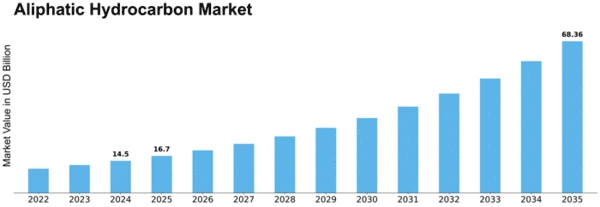

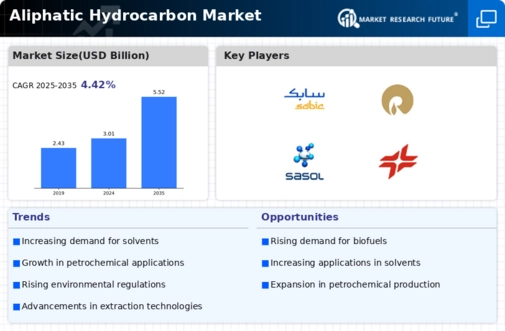
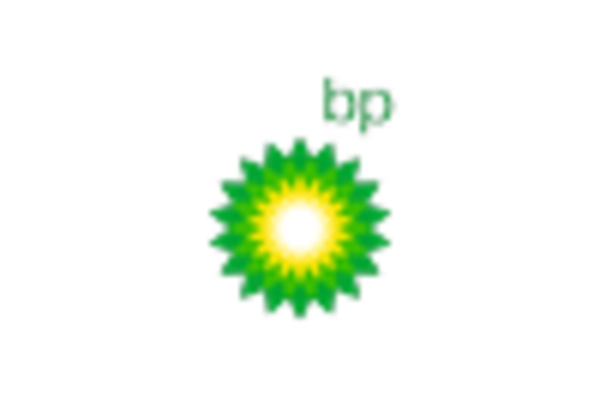
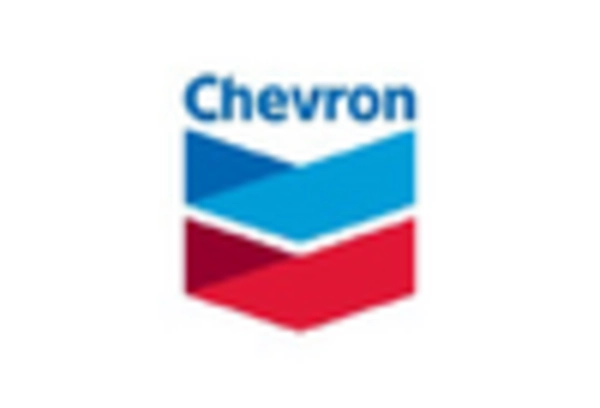

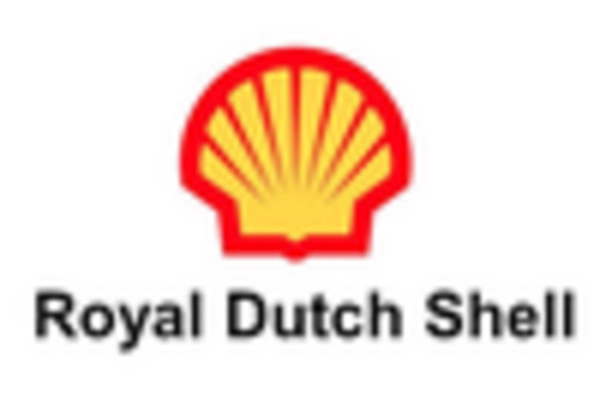











Leave a Comment